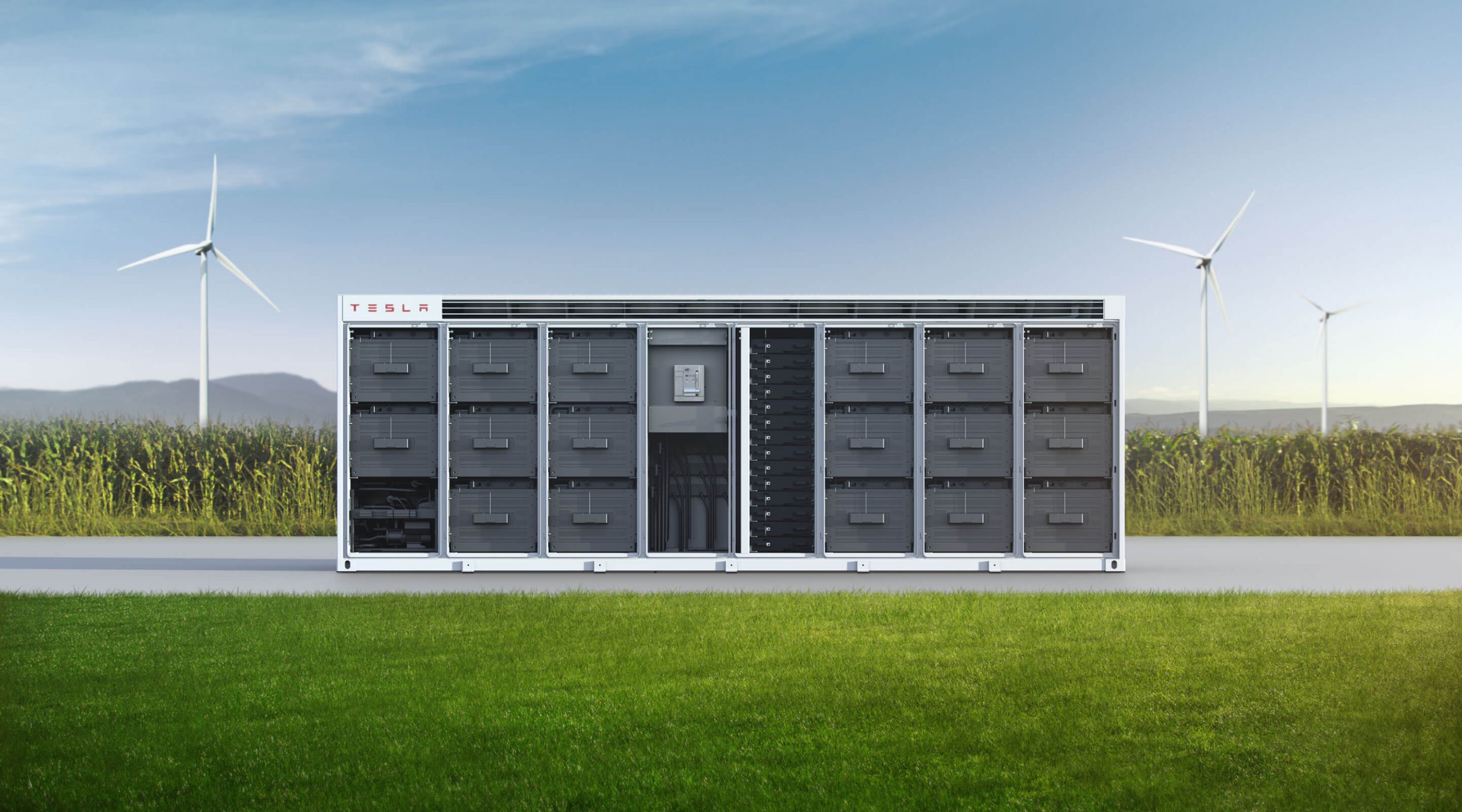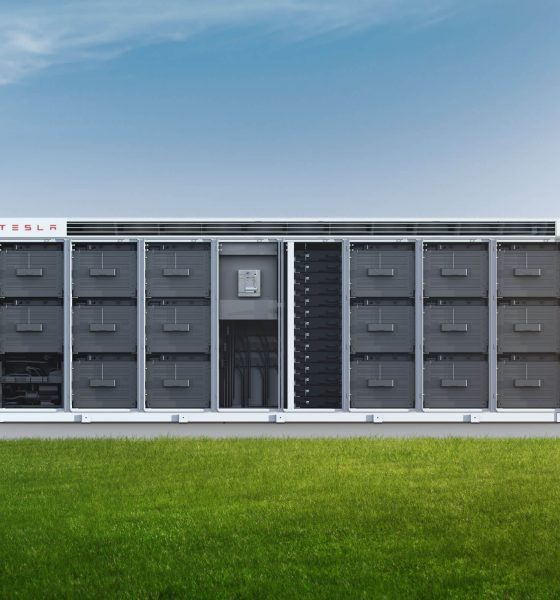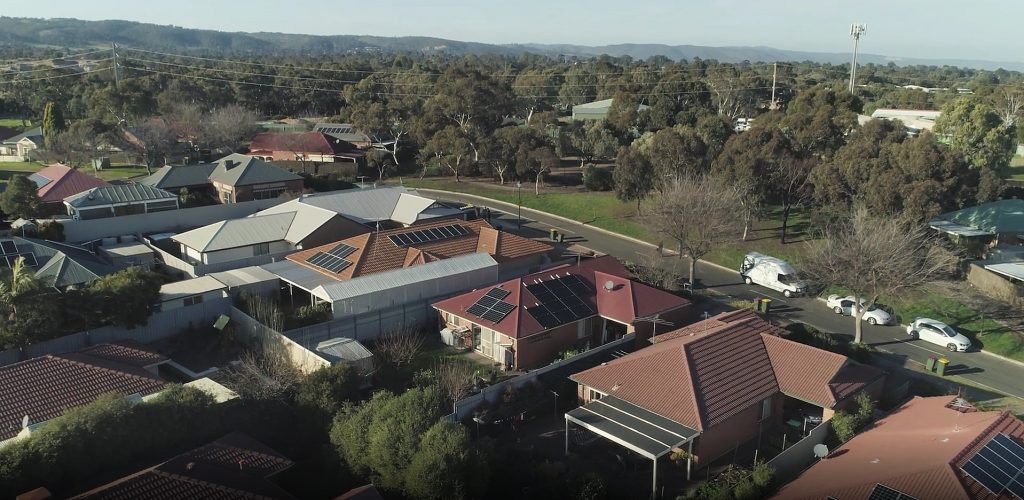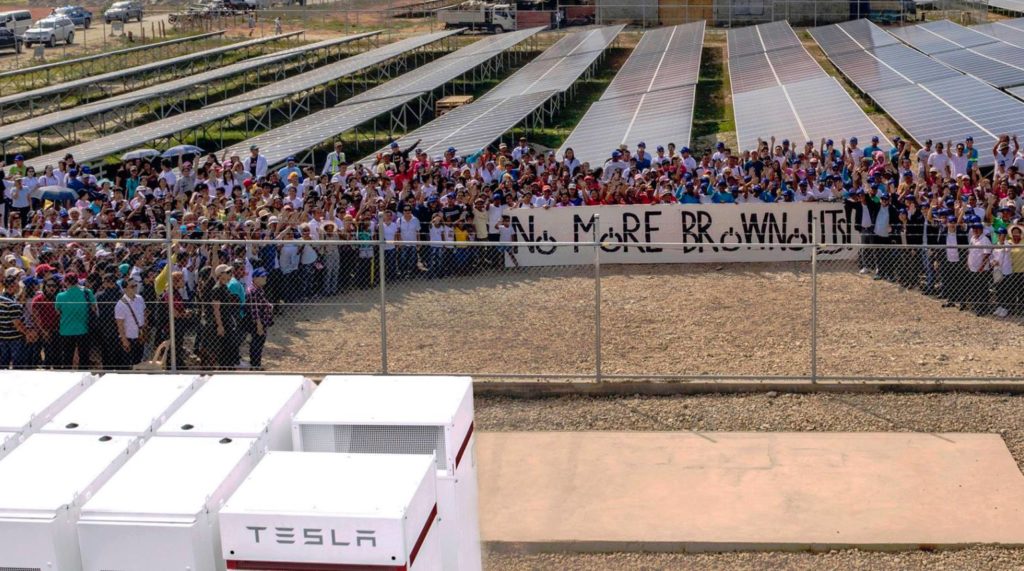

Energy
Tesla’s million mile battery is a golden goose for large-scale energy projects
Tesla Energy is a sleeping giant, rarely considered by analysts covering TSLA stock and largely underrated compared to the company’s electric car business. But something in Tesla’s pipeline may very well be a big catalyst that can fully awaken the behemoth that is the company’s Energy division: the upcoming million-mile battery.
Tesla’s million-mile battery is starting to look very close to production. Patents filed by the company have seemingly teased details about its characteristics. Elon Musk himself has spoken highly about the next-generation batteries, and studies from physicist Jeff Dahn’s team of researchers at Dalhousie University have suggested that such milestones are feasible. Tesla also appears to be gathering the necessary pieces for a massive play on batteries, as hinted at by its acquisition of battery-centric firms like Maxwell and Hibar.
True to its namesake, the million-mile battery is expected to support an electric car for 1 million miles, making them last significantly longer on the roads than comparable petrol-powered vehicles. Such a battery will likely give EVs an even bigger edge compared to their fossil fuel-powered counterparts, especially in terms of practicality. After all, a car that rarely needs maintenance and lasts a million miles is a better buy than one that requires an oil change every 5,000 miles and lasts only about 300,000 miles with extreme care.

Electric vehicles are not the only ones that will benefit from Tesla’s million-mile battery. Longer lasting batteries will also be extremely valuable for the company’s energy storage products, making them possibly last decades after their initial installation. This has a lot of positive implications for Tesla Energy, especially with regards to its grid-scale battery solutions. If Tesla’s batteries can match or outlast their fossil fuel-powered grid-scale counterparts, the company could very well see a spike in the demand for its battery storage solutions.
A good example of these benefits lies in how Tesla’s battery storage units are used to support communities that have no access to the power grid. With a million-mile battery, Tesla’s energy storage products could last for a very long time, practically ensuring that communities located off the beaten path could get access to sustainable power for decades.

The value of Tesla’s battery storage products, such as its Powerpacks and Powerwalls, is only getting more and more prominent with time. Tesla’s projects in South Australia are proof of this. The Hornsdale Power Reserve has saved residents in the region from intermittent blackouts, and the company’s Powerwalls are now being used as the backbone of a 50,000-strong Virtual Power Plant initiative.
Tesla’s million-mile battery can very well be the key for the Powerwall, Powerpack, and Megapack to dominate in their respective segments. A scenario where a Tesla battery storage system lasts decades is not too farfetched either since batteries used for stationary storage are not subject to the same strains experienced by those used in the company’s high-performance electric cars. Tesla’s batteries are already proven to be quick, cost-effective, and high-quality. With the assurance that they will last for a very long time, there’s a good chance that numerous cities and countries across the globe will adopt them for their energy needs.
When this happens, the sleeping giant that is Tesla Energy will likely be awaked fully. Such a scenario bodes incredibly well for Tesla, especially since investing legends such as Ron Baron have estimated that the company’s Energy business has the potential to be worth $500 billion on its own, on par with Tesla’s electric car division. The million-mile battery could very well be the key to this.

Energy
Tesla starts hiring efforts for Texas Megafactory
Tesla’s Brookshire site is expected to produce 10,000 Megapacks annually, equal to 40 gigawatt hours of energy storage.

Tesla has officially begun hiring for its new $200 million Megafactory in Brookshire, Texas, a manufacturing hub expected to employ 1,500 people by 2028. The facility, which will build Tesla’s grid-scale Megapack batteries, is part of the company’s growing energy storage footprint.
Tesla’s hiring efforts for the Texas Megafactory are hinted at by the job openings currently active on the company’s Careers website.
Tesla’s Texas Megafactory
Tesla’s Brookshire site is expected to produce 10,000 Megapacks annually, equal to 40 gigawatt hours of energy storage, similar to the Lathrop Megafactory in California. Tesla’s Careers website currently lists over 30 job openings for the site, from engineers, welders, and project managers. Each of the openings is listed for Brookshire, Texas.
The company has leased two buildings in Empire West Business Park, with over $194 million in combined property and equipment investment. Tesla’s agreement with Waller County includes a 60% property tax abatement, contingent on meeting employment benchmarks: 375 jobs by 2026, 750 by 2027, and 1,500 by 2028, as noted in a report from the Houston Business Journal. Tesla is required to employ at least 1,500 workers in the facility through the rest of the 10-year abatement period.
Tesla’s clean energy boom
City officials have stated that Tesla’s arrival marks a turning point for the Texas city, as it highlights a shift from logistics to advanced clean energy manufacturing. Ramiro Bautista from Brookshire’s economic development office, highlighted this in a comment to the Journal.
“(Tesla) has great-paying jobs. Not just that, but the advanced manufacturing (and) clean energy is coming to the area,” he said. “So it’s not just your normal logistics manufacturing. This is advanced manufacturing coming to this area, and this brings a different type of job and investment into the local economy.”
Energy
Tesla and Samsung SDI in talks over new US battery storage deal: report
The update was related by industry sources and initially reported by South Korean news outlets.

Recent reports have suggested that Tesla and Samsung SDI are in talks over a potential partnership to supply batteries for large-scale energy storage systems (ESS).
The update was related by industry sources and initially reported by South Korean news outlets.
ESS batteries to be built at Samsung’s Indiana plant
As noted in a report from Korea JoongAng Daily, the demand for energy storage systems has been growing rapidly in North America, thanks in no small part to the surge in AI investments across numerous companies. With this in mind, Tesla has reportedly approached Samsung SDI about a potential battery supply deal.
The deal is reportedly worth over 3 trillion Korean won (approximately $2.11 billion) and will span three years, according to The Korea Global Economic Daily. A battery supply deal with Samsung SDI could make sense for Tesla as the company already has a grid-scale battery, the Megapack, which is perfect for industrial use. Samsung SDI could simply supply cells for the EV maker.
Production of the batteries would reportedly take place at Samsung SDI’s joint venture factory with Stellantis in Indiana, which is currently under construction. Samsung SDI recently announced plans to use part of that plant’s EV lines to produce cells for ESS, with a targeted capacity of 30 GWh by the end of next year.
Tesla and Samsung’s partnership
At present, only a handful of manufacturers, including Korea’s LG Energy Solution, Samsung SDI, SK On, and Japan’s Panasonic, are capable of producing energy storage-scale batteries domestically in the United States. A Samsung SDI official issued a comment about the matter, stating, “Nothing has been finalized regarding cooperation with Tesla.”
The possible energy storage system deal adds another layer to Tesla’s growing collaboration with Samsung, which is already in line as a partner in the upcoming production of Tesla’s AI5 and AI6 chips. Early sample manufacturing of the AI6 is expected to begin in South Korea, with mass production slated for Samsung’s Texas-based Taylor foundry when it starts operations.
The AI6 chip will power Tesla’s next wave of high-volume projects, including the Optimus humanoid robot and the autonomous Cybercab service. Musk has called the partnership with Samsung a “real collaboration,” adding that he personally plans to “walk the line” at the Taylor facility to speed up progress.
Energy
Tesla VP hints at Solar Roof comeback with Giga New York push
The comments hint at possible renewed life for the Solar Roof program, which has seen years of slow growth since its 2016 unveiling.

Tesla’s long-awaited and way underrated Solar Roof may finally be getting its moment. During the company’s Q3 2025 earnings call, Vice President of Energy Engineering Michael Snyder revealed that production of a new residential solar panel has started at Tesla’s Buffalo, New York facility, with shipments to customers beginning in the first quarter of 2026.
The comments hint at possible renewed life for the Solar Roof program, which has seen years of slow growth since its 2016 unveiling.
Tesla Energy’s strong demand
Responding to an investor question about Tesla’s energy backlog, Snyder said demand for Megapack and Powerwall continues to be “really strong” into next year. He also noted positive customer feedback for the company’s new Megablock product, which is expected to start shipping from Houston in 2026.
“We’re seeing remarkable growth in the demand for AI and data center applications as hyperscalers and utilities have seen the versatility of the Megapack product. It increases reliability and relieves grid constraints,” he said.
Snyder also highlighted a “surge in residential solar demand in the US,” attributing the spike to recent policy changes that incentivize home installations. Tesla expects this trend to continue into 2026, helped by the rollout of a new solar lease product that makes adoption more affordable for homeowners.
Possible Solar Roof revival?
Perhaps the most intriguing part of Snyder’s remarks, however, was Tesla’s move to begin production of its “residential solar panel” in Buffalo, New York. He described the new panels as having “industry-leading aesthetics” and shape performance, language Tesla has used to market its Solar Roof tiles in the past.
“We also began production of our Tesla residential solar panel in our Buffalo factory, and we will be shipping that to customers starting Q1. The panel has industry-leading aesthetics and shape performance and demonstrates our continued commitment to US manufacturing,” Snyder said during the Q3 2025 earnings call.
Snyder did not explicitly name the product, though his reference to aesthetics has fueled speculation that Tesla may finally be preparing a large-scale and serious rollout of its Solar Roof line.
Originally unveiled in 2016, the Solar Roof was intended to transform rooftops into clean energy generators without compromising on design. However, despite early enthusiasm, production and installation volumes have remained limited for years. In 2023, a report from Wood Mackenzie claimed that there were only 3,000 operational Solar Roof installations across the United States at the time, far below forecasts. In response, the official Tesla Energy account on X stated that the report was “incorrect by a large margin.”








